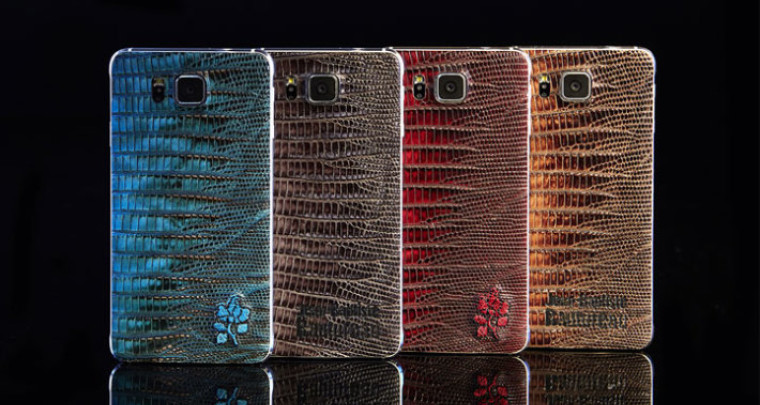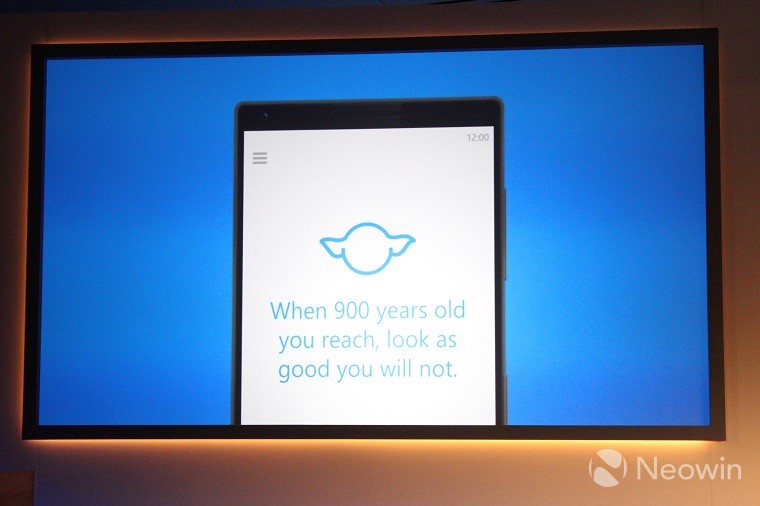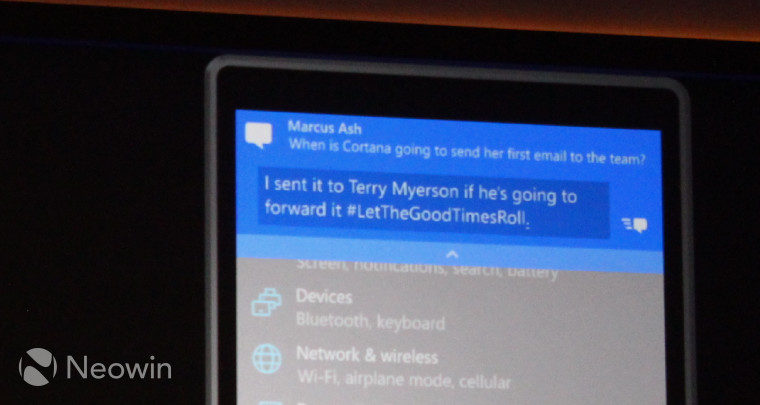7 Days is a weekly round-up of the Editors' picks of what's been happening in the world of technology - written with a dash of humor, a hint of exasperation, and an endless supply of (Irish) coffee.

It’s been a very long but very exciting week with tons to talk about when it comes to operating systems, futuristic products, technological innovations, exploding kittens and the reality of the marketplace. We’ve seen the next version of Windows and how Microsoft has become one the most exciting companies out there. And we’ll dive into all of it and much more in just a few minutes.
But before we get into any of that check your internet connection. Is it working fine? Are you happy with your speed and connectivity? Because if you’re not, real-life Tony Stark, Elon Musk, has a plan to bring better internet to the whole world via satellites. The avid entrepreneur has unveiled a plan this week that would see one of his companies launch 700 satellites around the world which would then beam down glorious internets to everyone, everywhere.
Of course, while a more connected world sounds great, we’ll also need to keep an eye out for security threats and digital spies. As it turns out the NSA weren’t the only ones doing the snooping out there, with Drug Enforcement Agency of the United States also getting in on the action and creating their own database of internet users.
In fact digital spying is so widespread that Apple’s iPhones, according to NSA leaker Edward Snowden, have special software inside which can be activated to track, locate, and spy on the phone’s user. Obviously, if this is true it’s not at all encouraging. At least remember that tin-foil hats need to be changed every week is they are to remain effective.

And speaking of iPhones, they are no doubt a great target for hackers and spies alike because, according to the latest data, more iPhones are now out in the wild than have ever been before. Apple has apparently made a killing with the latest generation of its smartphones.
The larger iPhone 6 and 6 Plus have been very well received around the world and have pushed Apple’s marketshare in almost all markets. Even in Asia where local brands were generally much better received, Apple is seeing stellar adoption rates.

In South Korea for example, the American company shot straight up to number two. While Samsung still leads, it’s their home country after all, the company is definitely feeling the pinch. Recently Samsung’s profits have dropped significantly and its marketshare is plunging globally.
Samsung is trying to reverse that trend by launching new devices and developing phones unlike any that are on the market currently. However the company seems to have hit a number of snags with its plans, which will likely cause further problems for the South Koreans.

Of course all of this is interesting, but pales in comparison to the big event that took place this week. Microsoft unveiled not only the next version of Windows 10, but also upcoming features, new hardware, the new mobile version of the OS and even a completely new project that’s unlike anything we’ve seen before.
After launching a number of technical preview builds, Microsoft held a big event where they showed off a new version of Windows 10, one that’s more polished and starts bringing together disparate elements for the company’s roadmap.
On stage, Terry Myerson and Joe Belfiore demoed the new UI of Windows 10 including a Continuum mode that wants to bridge the gap between tablet and desktop functionality. We got to see a redesigned Action and Notification Center, new search capabilities, a brand new PC Settings app and even the way Windows 10 will work on tablets.
Of course that’s just the basic UI of the operating system, but we also got to see numerous new features.

One of the biggest changes coming with Windows 10 will be Microsoft’s new browser, currently codenamed “Project Spartan”. While we’ve heard many things beforehand we finally got to witness it in action this week, and so far it’s looking great.
Microsoft explained that Spartan will, sort of, replace Internet Explorer and its bad reputation with a new, better looking, fast, fluid and lightweight browser that will play nicely with the modern web. And while under the hood Spartan still has IE DNA, don’t be fooled. Internet Explorer is there if users need it, but Spartan is the future of the browser.
Spartan will end up running on all Windows 10 devices including desktops, phones, tablets and even the Xbox. It’s great to see a program jump from one platform to the others for a consistent experience.

And speaking of things jumping platforms, Cortana is finally making the transition from mobile to desktop, and now Windows 10 users will get their very own personal digital assistant.
As shown off on stage, she’ll live in the taskbar under the search function on desktop Windows, and she’ll be able to do pretty much what you’d expect: schedule appointments, search for documents, find places and people and so on. While most of that functionality is already in Windows Phone some of it is completely new and specific to the desktop. Cortana will also show up in the Spartan browser to help you on the web.

Moving on to the second big announcement from Microsoft’s event, we finally got to hear and see a few tidbits about the future of Windows Phone. Microsoft’s mobile platform is getting the chop, at least in terms of naming – the future is all Windows 10, no more Phone to speak of.
The company didn’t go to into much detail about the new mobile OS – or rather the mobile version of Windows 10 – but they did show off a few changes coming to the platform. Transparent tiles with a real background showed up on the new OS. Also making an appearance was a redesigned Settings page which fixes the pile of hot garbage that Windows Phone users currently have to deal with, and brings the UI in line with the desktop version.

Finally we had a chance to see a new Skype and Messaging app which bakes the VOIP client into the OS for a much more fluid and robust experience. The company is obviously trying to push their own offering as a primary means of communications and by the way things are going they might be able to pull that off, especially as the new Messaging app will also be found in Windows 10 desktop.

Microsoft also unveiled the touch version of Office it’s been working on for tablets and phones. After launching a great version of the productivity suite for iOS and Android many Windows users were dismayed that our own offerings were inferior. But the company is obviously working hard to fix that and they’ve unveiled a fully featured touch client for mobile devices.
These are expected to launch later this year alongside Windows 10, while Office 2016, which Microsoft also mentioned, is expected to show up in preview form before the end of the year.
If all of these new features sound interesting to you and you can’t wait to try them out there’s some really good news: the Insider program allows you to do just that.

Microsoft’s Insider program has grown to almost two million people who are testing Windows 10 on their machines right now. You can easily get in on the action by signing up and trying one of the preview builds.
In fact this would be a great time for you to try that because last night Microsoft just released their latest preview version of Windows 10, build 9926, which brings some of the functionality discussed above, including Cortana on the desktop. You can even install the build straight from Windows 7 or Windows 8.
Of course this is pre-release software so be sure you know what you’re doing and check out the list of known problems with this version of the OS. If on the other hand you prefer to play things safe we have an exhaustive gallery to give you a taste of the latest version.
The same goes for Windows 10 for phones with a preview build coming sometime next month. Users will be able to install it on almost any current Windows Phone. Or if you prefer to wait Microsoft promised they’ll have new flagship devices ready later this year, though they didn’t go into any detail.
Oh and one last thought: Microsoft announced that all Windows 7, Windows 8 and Windows Phone 8 users will have one year after the launch of Windows 10 where they will be able to upgrade to the new OS, completely free.

And speaking of devices, we saved the best for last. While new OS versions and updated UIs are always fun, Microsoft blew everyone away this week with the unveiling of Windows Holographic and HoloLens – an augmented reality headset that promises to change the way we use computers forever.
HoloLens is basically Microsoft’s answer to all of your childhood wishes. By imposing a virtual reality over our own physical one, HoloLens can transport you to a different place. It can show you what’s it like to be inside a game, inside a living cell, even on Mars.
The headset uses see through lenses, wireless connectivity, lots of processing power and a special version of Windows 10 to create what seems like magic. Want to be on another planet? Done! Want to see a famous sculpture in your living-room? Done! Want to be on the pitch at the Super Bowl? Done! Want to see FuturePorn™ on your bed? Done!
This really is amazing, and Neowin got to try it out. If Microsoft can pull this technology off – which is a very big if – then we know what the future looks like.
Finally after so much excitement, Microsoft ended the week on a high note: they got a note of congratulations from ex-CEO and almost-Beyoncé’s-friend Steve Ballmer who, not surprisingly, still loves this company!


















4 Comments - Add comment